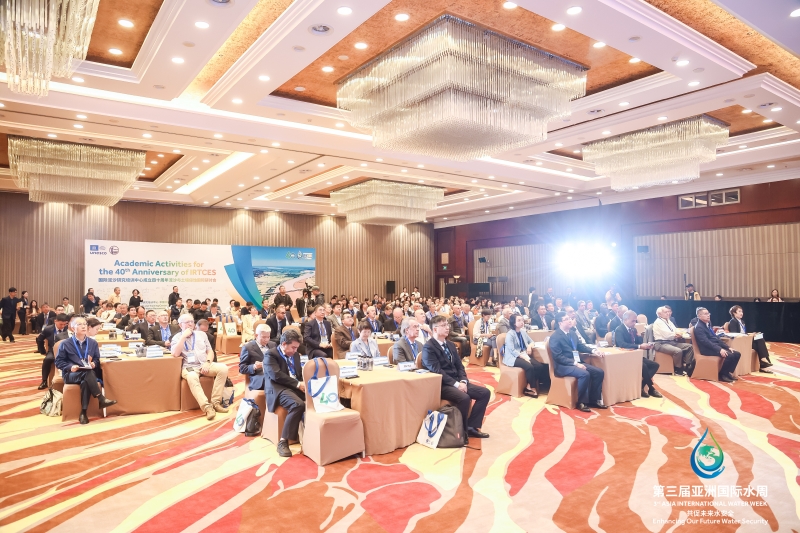On the
morning of September 23rd, Academic Activities for the 40th Anniversary of
International Research and Training Center on Erosion and Sedimentation
(hereinafter referred to as IRTCES) was held in Beijing. IRTCES is the first
category II center established by UNESCO in the world. The theme of the meeting
was “Work Together to Build a Clean and Beautiful World”. Mr. Li Liangsheng,
Vice Minister of Water Resources of P.R. China, and Mr. Siddharth Chatterjee,
United Nations Resident Coordinator in China, attended the opening ceremony and
delivered speeches. Ms. Lidia Brito, Assistant Director-General for Natural
Sciences of UNESCO, delivered a speech through video. Ms. Peng Jing, Director
General of the IRTCES and President of China Institute of Water Resources and
Hydropower Research (IWHR), presided over the meeting and summarized.
Li
Liangsheng pointed out in his speech that after 40 years of development, the IRTCES
has become a communication and cooperation platform with strong professional
strength and great influence in the international sediment research field, and
has laid a leading position, making important contributions to the development
and progress of world sediment science. As a world leader in the field of
sedimentation, IRTCES is expected to further fulfill its leading role in the
field of international sedimentation and as a UNESCO category II center in
accordance with the requirements of UNESCO and the Chinese Government, and to
continue to support the realization of the objectives of the strategic plan of
the ninth phase of IHP of UNESCO, and make new and greater contributions to
solving the global water security problems and building a community of human
destiny! To make new and greater contributions to solve the common global water
security problems and building a global community for a shared future!
Siddharth
Chatterjee expressed his congratulations on the 40th anniversary of the IRTCES,
emphasizing that this milestone event represents decades of global cooperation
to address the most serious environmental challenges. As a leader in the field
of sedimentation, the IRTCES has been at the forefront of sediment management
and has become a model for global international cooperation, providing experts
and contributions to research and capacity building in the field of erosion and
sedimentation management worldwide. It looked forward to continuing to
capitalize on existing knowledge and partnerships to contribute to a more
secure and sustainable future.
Lidia Brito
pointed out that the IRTCES is the first UNESCO category II center established
in 1984 and a role model for the 29 water-related category II centers that have
been established in other parts of the world, and plays an important role in
promoting the sustainable management of soil and sediment resources locally,
regionally and globally, among other aspects. She thanked the Chinese
Government for its long-term and fruitful cooperation with UNESCO and looked
forward to further deepening cooperation with Chinese scientists.
Representatives
from the UNESCO Regional Office for East Asia, the Chinese National Commission
for UNESCO, the International Association for Hydro-Environment Engineering and
Research (IAHR), the International Sediment Initiative, and the UNESCO category
II water-related centers, and UNESCO Chairs made exchanges. More than 150
participants from more than 20 countries and regions attended the meeting.


